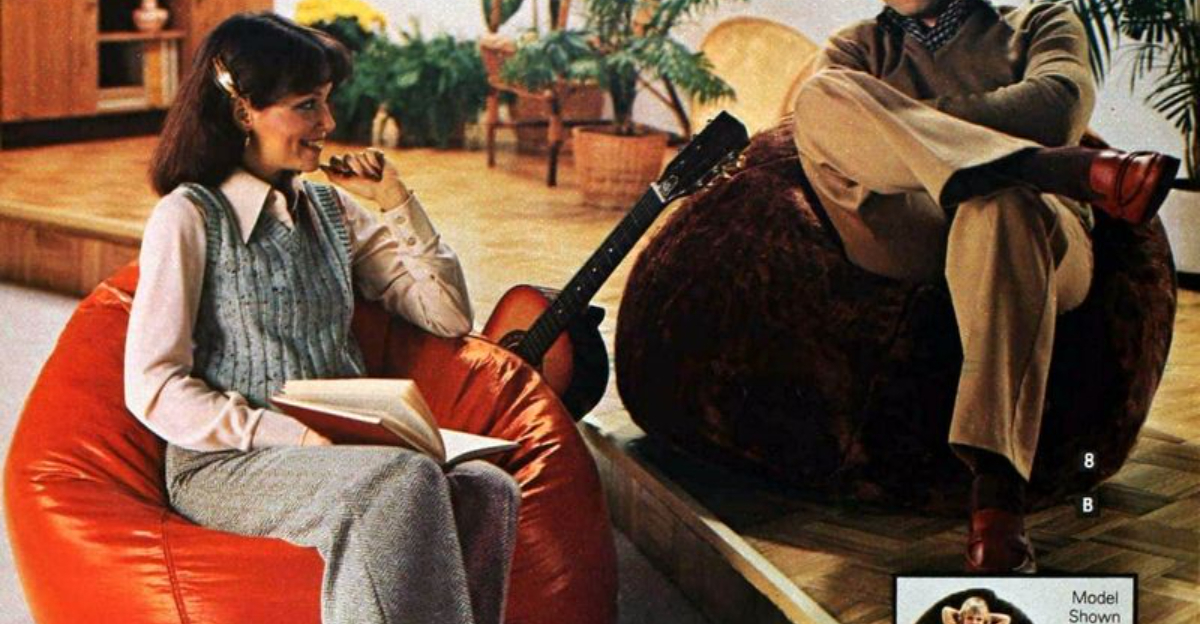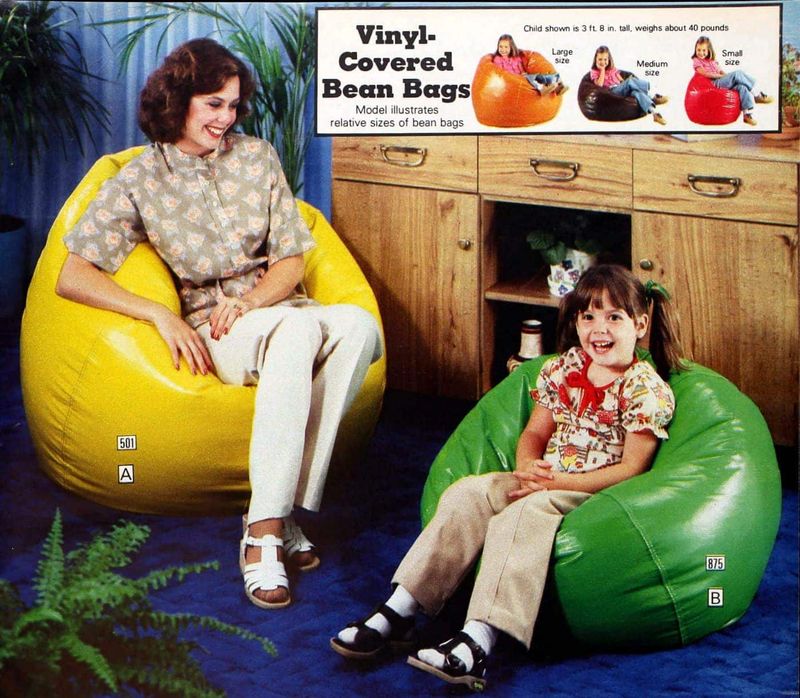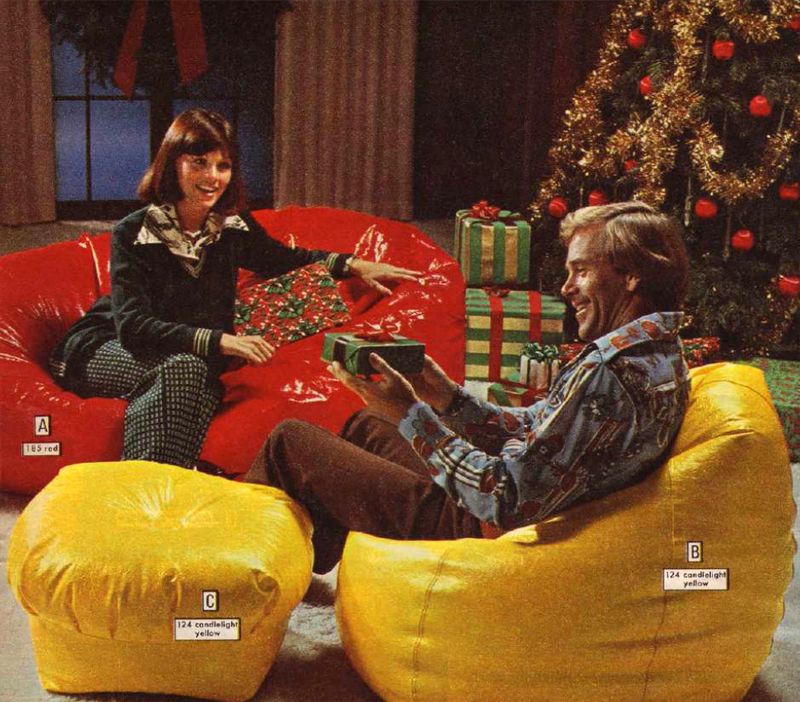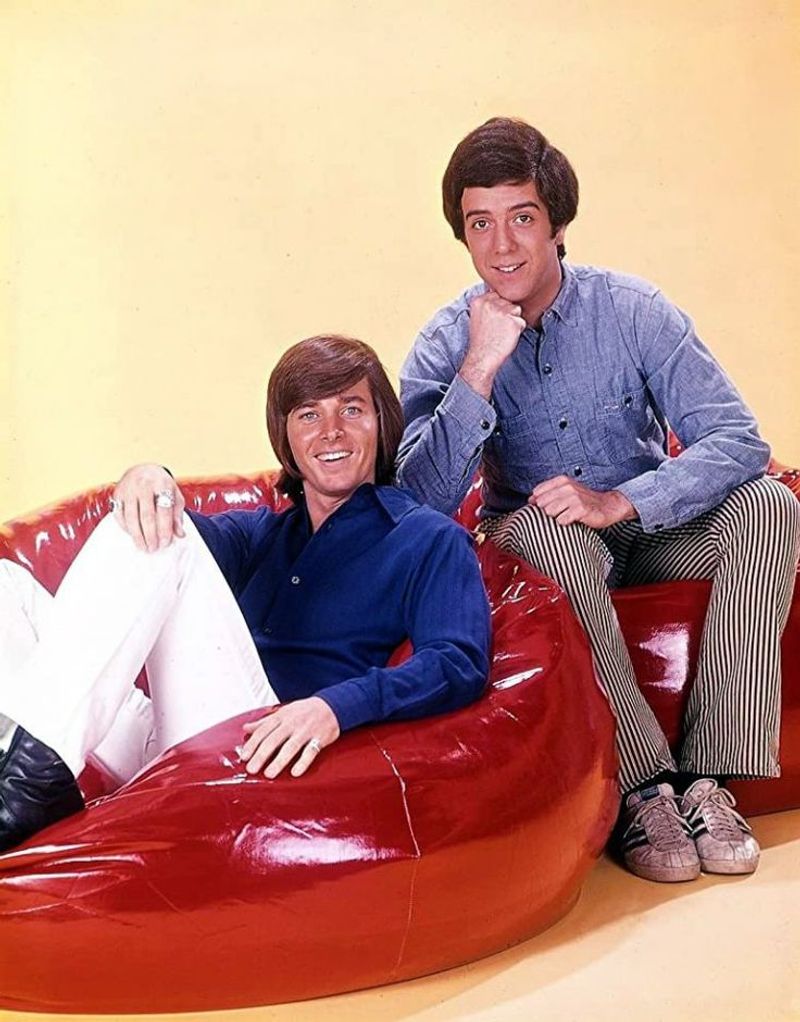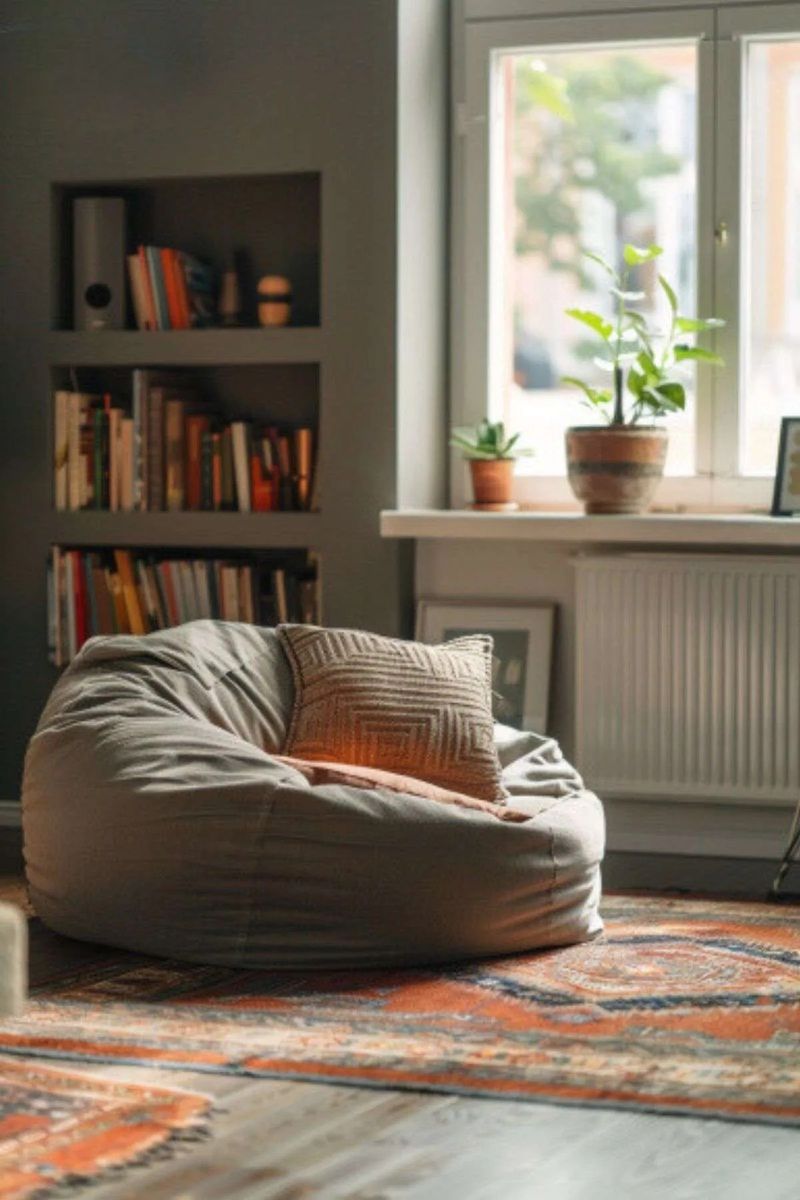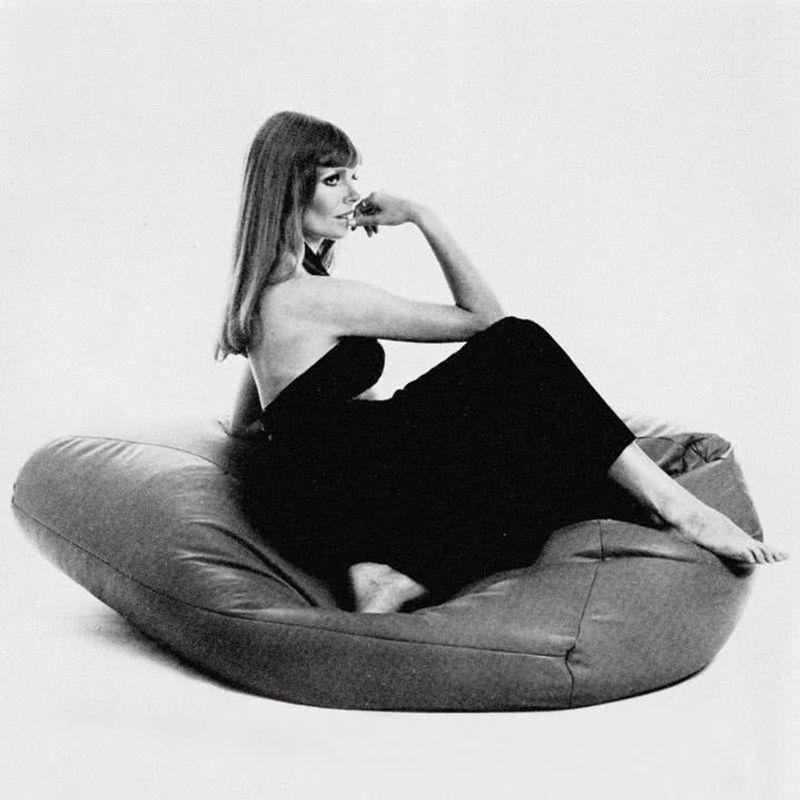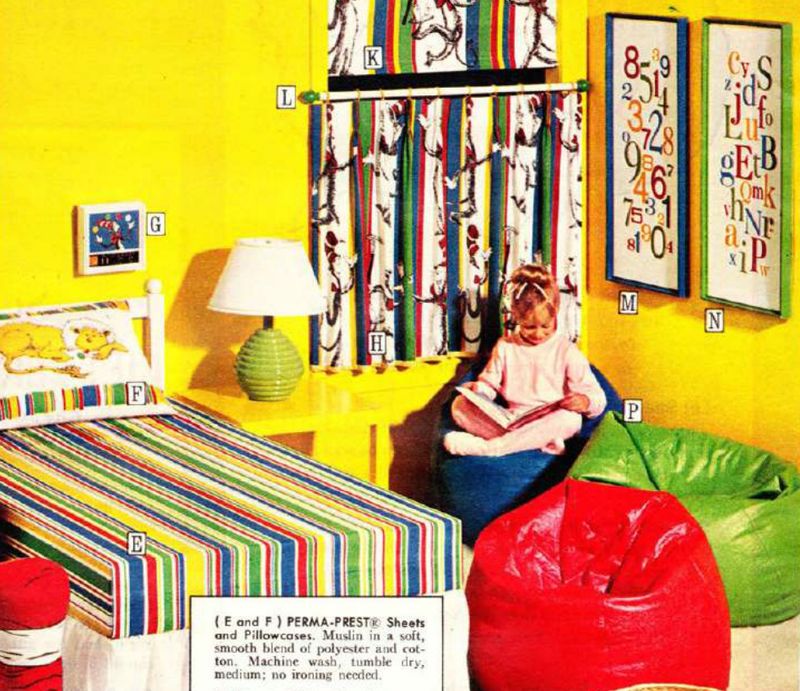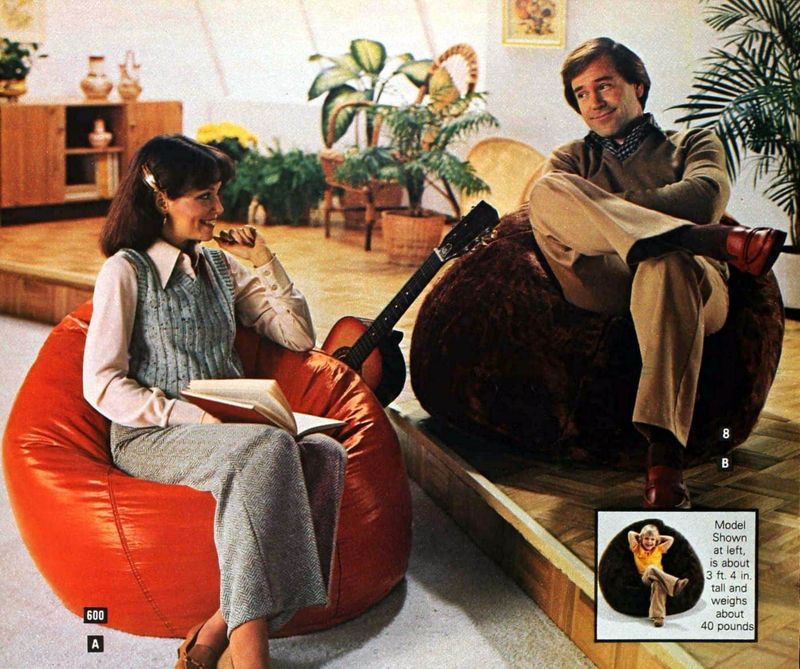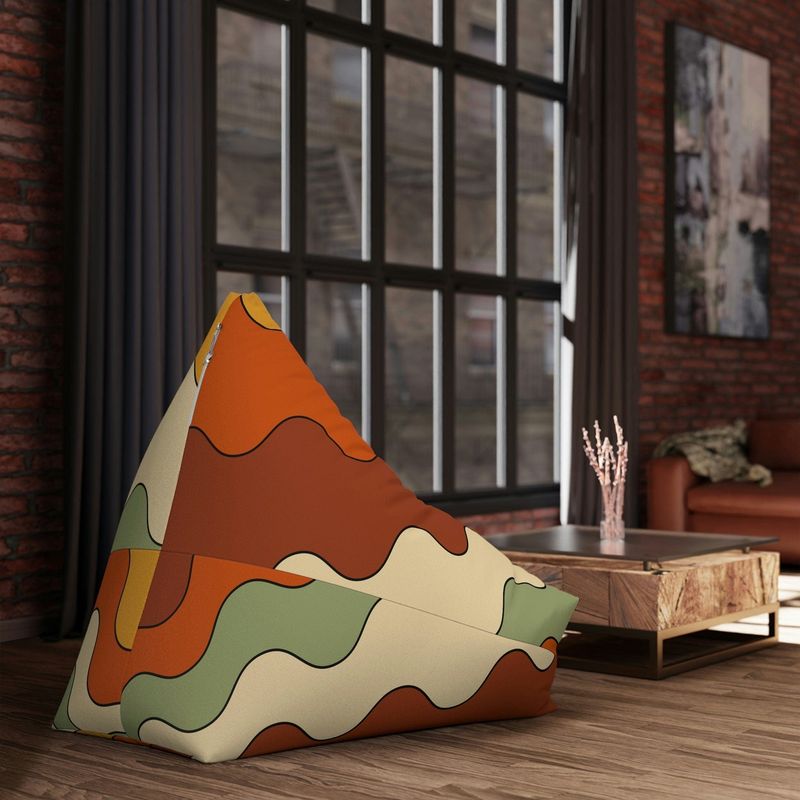The 1970s was a decade characterized by a unique blend of style, social movements, and cultural shifts. Among the iconic elements of this era was the ubiquitous bean bag chair. These comfortable, casual seating options became symbolic of the free-spirited, laid-back lifestyle that defined the time. From vibrant designs to their space-saving versatility, bean bag chairs were more than just furniture; they were a cultural phenomenon. Let’s explore 10 fascinating facts that explain why everyone seemed to have a bean bag chair in their home during the ’70s.
1. The Ultimate in Casual Comfort
Who didn’t want to sink into comfort? Bean bags offered an unmatched coziness, molding to fit every curve. In the 1970s, relaxation was a lifestyle choice, and bean bags were the epitome of casual comfort. Unlike traditional furniture, they embraced and supported, inviting you to unwind completely. Friends and family gathered around, enjoying the soothing experience these chairs provided. They were perfect for disco naps or simply lounging with a good book. The bean bag chair became synonymous with personal comfort, adapting to anyone who sat in it—a true revolution in seating design.
2. A Symbol of Counterculture
Rebellion was in the air, and bean bags were a silent protest against conformity. The ’70s were about breaking free from the norm, and furniture was no exception. Traditional sofas were out; bean bags were in. With their lack of structure, these chairs embodied freedom and creativity. They were embraced by the counterculture movement, symbolizing a departure from the rigid past. Whether in a college dorm or a cozy apartment, bean bags allowed individuals to express their uniqueness. These chairs were more than seating; they were a statement, a reflection of an era.
3. Affordable & Accessible
Bean bags fit any budget, making them a hit across demographics. In a decade where financial freedom varied, they were a blessing for students and young couples. Affordable and stylish, bean bags were a practical choice. They didn’t require much space or maintenance. Many who wanted chic decor without the expense chose them. This accessibility made them ubiquitous, spreading into households everywhere. From cozy nooks to college dorms, their affordability made it easy to adopt the bean bag revolution. They democratized comfort, proving style doesn’t have to break the bank.
4. Space-Saving & Versatile
Living spaces were changing, and furniture had to keep up. Bean bags were easily moved, stored, or stacked, adapting to any environment. They fit in small apartments and expansive living rooms alike. Lightweight and flexible, they transformed spaces with ease. Hosting a party? Just move them around. Need extra seating? There they were. Bean bags were the versatile choice in the ’70s, transforming any room into a relaxed haven. Their ability to adapt to various settings made them indispensable for many homemakers. They were the go-to for flexible, modern living.
5. Bright, Bold, & Groovy Designs
Color and creativity defined ’70s interiors. Bean bags came in every hue and pattern imaginable. From bold oranges to psychedelic swirls, they were more than just seats; they were art. These designs captured the spirit of the era, adding vibrancy to homes. People embraced the chance to express themselves, choosing styles that reflected their personalities. Bean bags were a canvas for creativity, turning living rooms into lively, artistic spaces. Their groovy designs made them iconic, a standout feature in any home decor. They weren’t just chairs; they were a visual delight.
6. Perfect for Parties & Socializing
Parties were vibrant and social, and seating had to match the mood. Bean bags were ideal for gatherings, offering informal, friendly seating. They encouraged a relaxed atmosphere, perfect for chatting and mingling. As disco and casual get-togethers became popular, the need for flexible seating grew. Bean bags filled this role naturally, making them a staple at any social event. They broke down barriers, inviting people to sit comfortably and enjoy the moment. These chairs weren’t just for sitting; they were for connecting, enhancing the social fabric of the ’70s.
7. Pop Culture & Media Influence
Seen on TV and in films, bean bags were stars in their own right. Their presence in media cemented their trendy status. Viewers saw them as symbols of modernity and youth. As characters lounged in these seats, audiences took notice. Bean bags became aspirational, linked to the cool and the trendy. This influence spread quickly, turning fiction into reality. Fans wanted a piece of that on-screen lifestyle, leading to a surge in popularity. Bean bags weren’t just props; they were part of the cultural dialogue, shaping perceptions and dreams alike.
8. Kids Loved Them (And So Did Parents)
Durable and fun, bean bags were a hit with kids. Parents loved their practicality. Light enough to move and tough enough for play, they became family favorites. Kids could jump, flop, and relax, all without fear of breaking them. For parents, cleaning was easy, thanks to removable covers. Bean bags offered a safe, comfortable spot for playtime or quiet moments. They were more than just furniture; they were companions in childhood journeys. Families appreciated their versatility, finding them perfect for any age. Bean bags became a staple in homes, bridging generations with joy.
9. The Rise of Casual Living
Casual was the new formal. The ’70s embraced relaxed, multipurpose spaces, and bean bags fit right in. Gone were the days of stiff, separate rooms. Families gathered in conversation pits and open living areas. Bean bags offered flexible seating that moved with the family’s needs. They were perfect for impromptu gatherings or laid-back evenings. This shift in lifestyle made them a natural choice for modern homes. Bean bags weren’t just trendy; they symbolized a new way of living, one that prioritized comfort and connection over tradition and formality.
10. They Just Looked Cool
Part of their charm was pure coolness. Bean bags looked like they came from the future, aligning with the era’s fascination with space and innovation. Their unique shape and style made them stand out. For those who wanted their homes to reflect cutting-edge design, bean bags were the answer. They appealed to a sense of adventure and exploration, fitting into the sci-fi aesthetic that captivated imaginations. People loved them for their forward-thinking design as much as their comfort. Bean bags were more than furniture; they were an expression of futuristic fantasy.
